Filter by
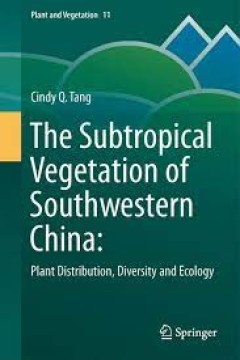
The Subtropical Vegetation of Southwestern China Plant Distribution, Diversi…
This book provides a wealth of high-quality scientific information on the patterns and processes of vegetation change across a broad range of spatial and temporal scales, concentrating on Southwestern China, mostly on the Yunnan region, and extending to the Yangtze River valley near the boundaries separating Chongqing, Sichuan and Guizhou.
- Edition
- -
- ISBN/ISSN
- 978-94-017-9741-2
- Collation
- -
- Series Title
- -
- Call Number
- -
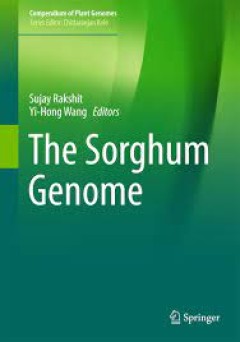
The Sorghum Genome
This book provides insights into the current state of sorghum genomics. It particularly focuses on the tools and strategies employed in genome sequencing and analysis, public and private genomic resources and how all this information is leading to direct outcomes for plant breeders. The advent of affordable whole genome sequencing in combination with existing cereal functional genomics data has…
- Edition
- -
- ISBN/ISSN
- 978-3-319-47789-3
- Collation
- -
- Series Title
- -
- Call Number
- -
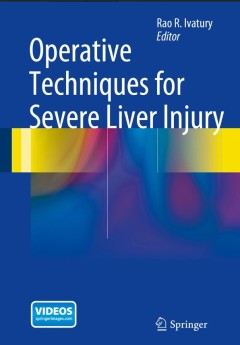
Operative Techniques for Severe Liver Injury
This volume is a complete manual of operative techniques for battling a severe liver injury. It provides an easy pre-operative and intra-operative reference with clear illustrations, line drawings as well as actual intra-operative color pictures, supplemented by online video segments. The early sections of the book deal with the fundamentals of surgical anatomy and critical maneuvers in the res…
- Edition
- 1
- ISBN/ISSN
- 978-1-4939-1199-8
- Collation
- XIII, 165
- Series Title
- -
- Call Number
- -
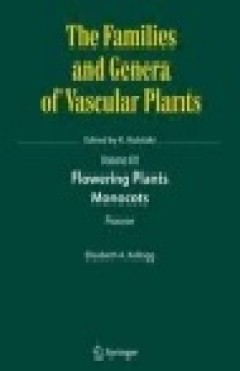
Flowering Plants. Monocots: Poaceae
Beyond the treatment of phylogeny and formal taxonomy, the author presents a wide range of information on topics such as the structural characters of grasses, their related functional aspects and particularly corresponding findings from the field of developmental genetics with inclusion of genes and gene products instrumental in the shaping of morphological traits (in which this volume appears …
- Edition
- -
- ISBN/ISSN
- 978-3-319-15332-2
- Collation
- XV, 416 hlm.
- Series Title
- The Families and Genera of Vascular Plants
- Call Number
- -

Flowering Plants. Eudicots: Aquifoliales, Boraginales, Bruniales, Dipsacales,…
This volume covers the orders Boraginales, Garryales and Solanales (except Convolvulaceae) of the Lamiids (Asterids I) as well as three unplaced families of that clade, i.e. Vahliaceae, Icacinaceae and Metteniusaceae, and the orders Aquifoliales, Escalloniales, Bruniales, Dipsacales and Paracryphiales of the Campanulids (Asterids II). It is the first of two final volumes to (almost) complete th…
- Edition
- -
- ISBN/ISSN
- 978-3-319-28534-4
- Collation
- XII, 412 hlm.
- Series Title
- The Families and Genera of Vascular Plants
- Call Number
- -
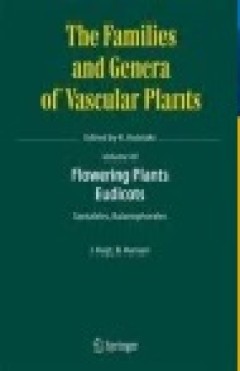
Flowering Plants. Eudicots: Santalales, Balanophorales
Santalales are predominantly hemiparasites connected with either the branches or the roots of other green land plants, whereas Balanophoraceae are holoparasites that form terrestrial tubers attached to the roots of woody hosts. In both orders, parasitism has led to considerable reductions of the vegetative and reproductive organs and detailed descriptions are given on the initiation of ramal an…
- Edition
- -
- ISBN/ISSN
- 978-3-319-09296-6
- Collation
- X, 213 hlm.
- Series Title
- The Families and Genera of Vascular Plants
- Call Number
- -
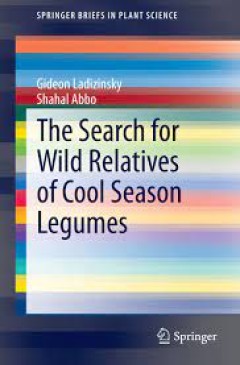
The Search for Wild Relatives of Cool Season Legumes
The study of origin and domestication of legumes described in this book emerged when it became apparent that while this kind of information is adequate for cereals, the pulses lagged behind. At the end of the 1960s the senior author initiated a study on the chickpea's wild relatives followed by similar attempts for broad bean, fenugreek, common vetch, bitter vetch, and lentil. The junior aut…
- Edition
- -
- ISBN/ISSN
- 978-3-319-14505-1
- Collation
- -
- Series Title
- -
- Call Number
- -
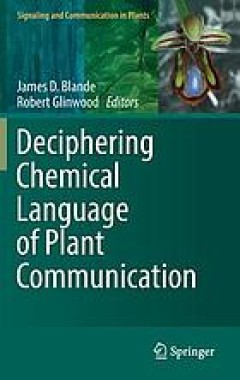
Deciphering chemical language of plant communication
This book provides an overview of the intricacies of plant communication via volatile chemicals. Plants produce an extraordinarily vast array of chemicals, which provide community members with detailed information about the producer's identity, physiology and phenology. Volatile organic chemicals, either as individual compounds or complex chemical blends, are a communication medium operating be…
- Edition
- -
- ISBN/ISSN
- 9783319334981
- Collation
- viii, 326 pages)
- Series Title
- -
- Call Number
- 580
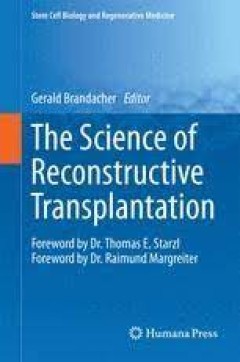
The Science of Reconstructive Transplantation
This volume presents a comprehensive overview of the latest advances in basic and translational research in the field of reconstructive transplantation and its potential therapeutic implications. Dr. Thomas E. Starzl and Dr. Raimund Margreiter, both pioneers in the field of transplantation, have written the foreword for the book. The volume spans such topics as skin rejection, immune monitor…
- Edition
- -
- ISBN/ISSN
- 978-1-4939-2071-6
- Collation
- -
- Series Title
- -
- Call Number
- -
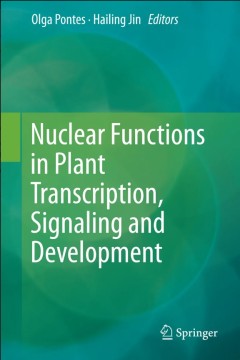
Nuclear Functions in Plant Transcription, Signaling and Development
The genome is more than a linear code as depicted by its DNA sequences as several interacting factors play a crucial role in shaping its organization and function. The complete sequences of a number of plant genomes and the recent advances of high-throughput technologies has fueled research efforts in the field of Plant Nuclear Biology unveiling numerous insights about the mechanisms underlying…
- Edition
- 1
- ISBN/ISSN
- 978-1-4939-2385-4
- Collation
- X, 182
- Series Title
- -
- Call Number
- -
 Computer Science, Information & General Works
Computer Science, Information & General Works  Philosophy & Psychology
Philosophy & Psychology  Religion
Religion  Social Sciences
Social Sciences  Language
Language  Pure Science
Pure Science  Applied Sciences
Applied Sciences  Art & Recreation
Art & Recreation  Literature
Literature  History & Geography
History & Geography